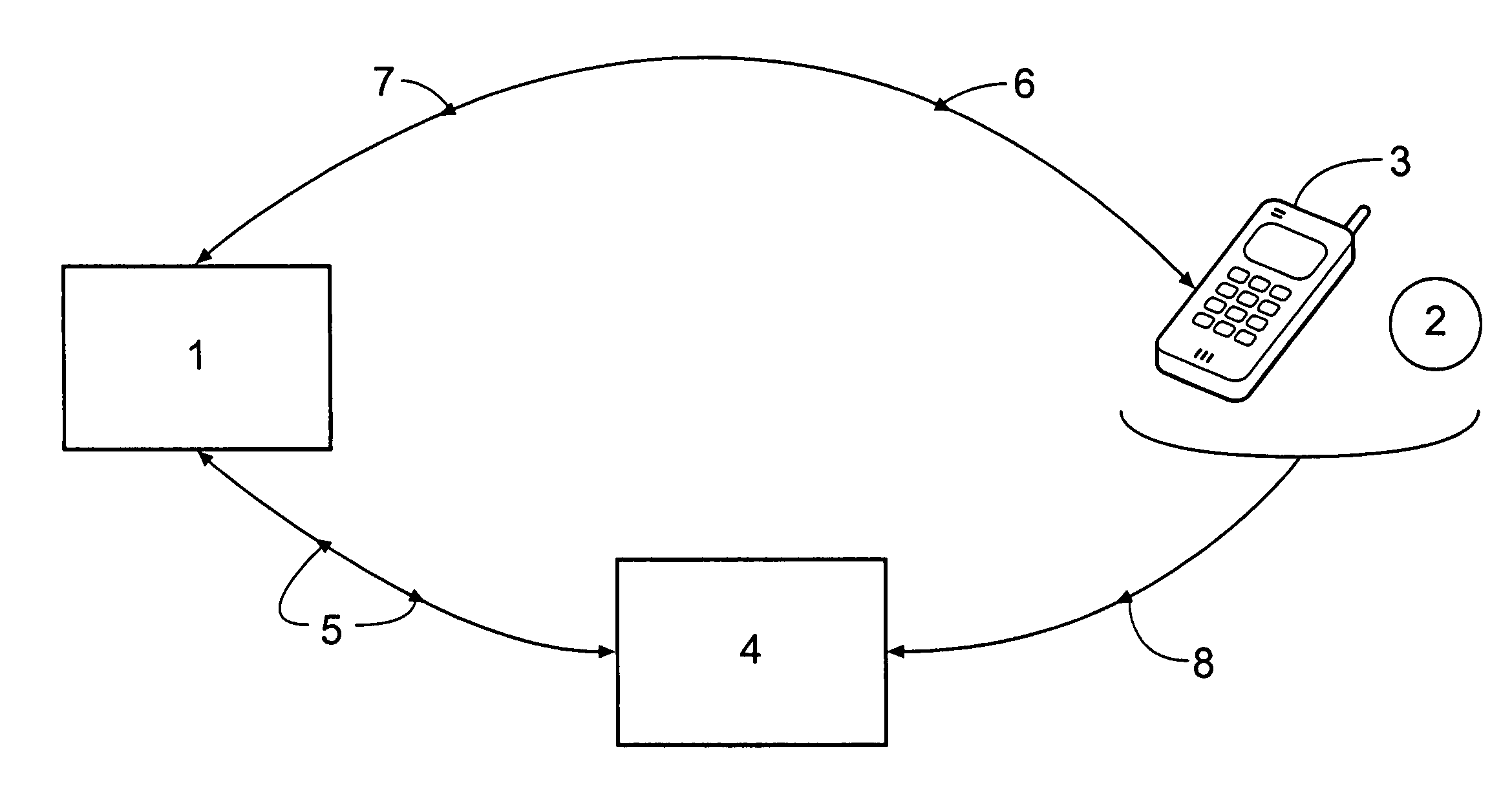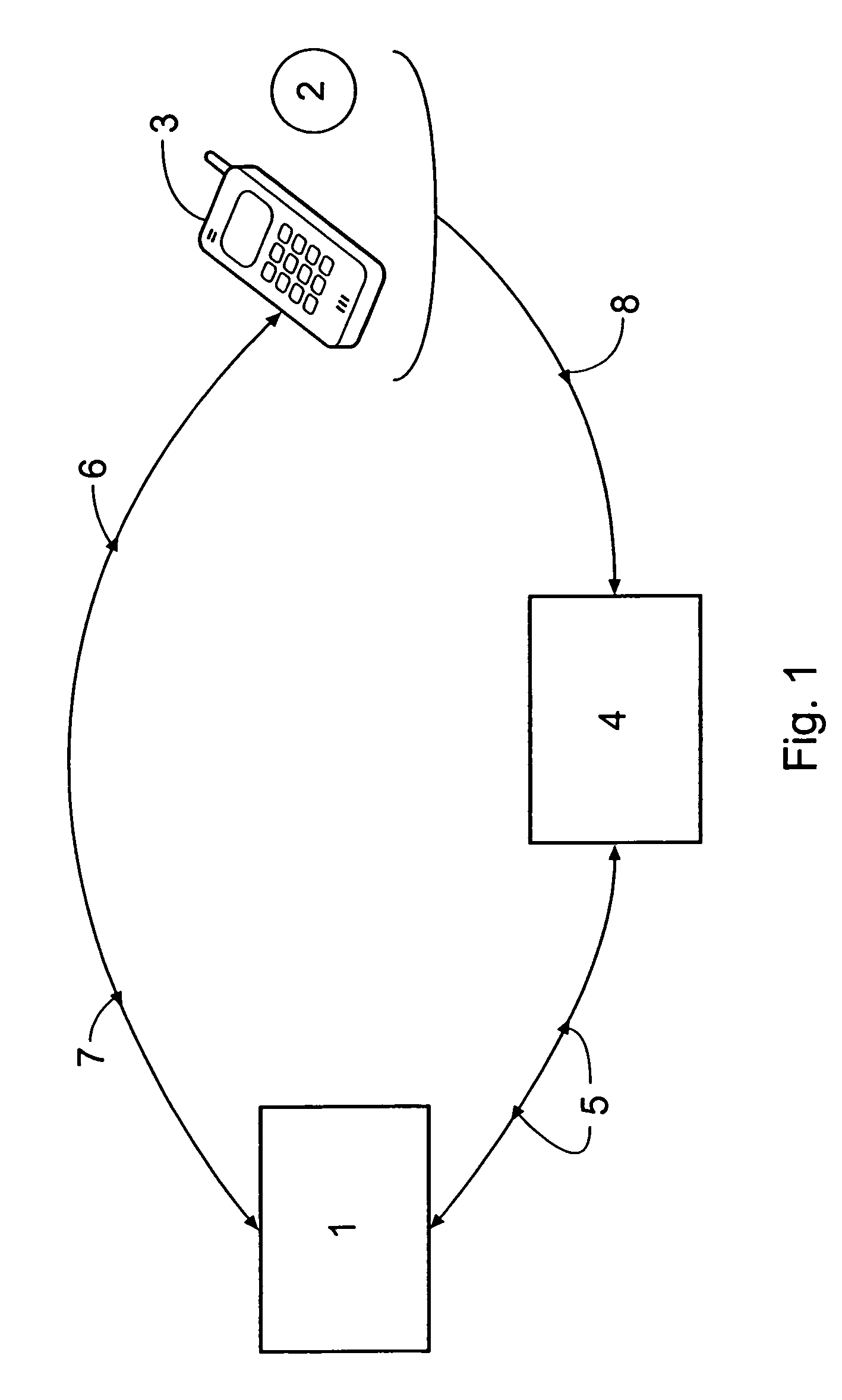Embedded synchronous random disposable code identification method and system
a technology of synchronous random and disposable code, applied in the field of embedded synchronous random disposable code identification method and system, can solve the problems of system being open to fraudulent abuse and not completely secure, and achieve the effect of adding a level of security
- Summary
- Abstract
- Description
- Claims
- Application Information
AI Technical Summary
Benefits of technology
Problems solved by technology
Method used
Image
Examples
Embodiment Construction
[0037]FIG. 1 shows a host computer 1 operated by a credit / debit card issuer, a user 2 having a mobile telephone 3, and an EFTPOS terminal 4. The user 2 is issued with a card (not shown) having a unique 16-digit account number embossed and magnetically encoded thereon, this 16-digit account number being correlated in the host computer 1 with account details relating to the user as well as a 4-digit mask code selected by or assigned to the user 2 upon initial registration with the credit / debit card issuer and a unique telephone number of the mobile telephone 3. The 16-digit account number is chosen for compatibility with existing credit / debit card protocols, and the 4-digit mask code for compatibility with existing PIN protocols. When the user 2 wishes to make a purchase from a retailer (not shown) operating the EFTPOS terminal 4, he or she presents the card, which is then scanned by the EFTPOS terminal 4. Details regarding a purchase are also entered into the EFTPOS terminal 4 by the...
PUM
 Login to View More
Login to View More Abstract
Description
Claims
Application Information
 Login to View More
Login to View More - R&D
- Intellectual Property
- Life Sciences
- Materials
- Tech Scout
- Unparalleled Data Quality
- Higher Quality Content
- 60% Fewer Hallucinations
Browse by: Latest US Patents, China's latest patents, Technical Efficacy Thesaurus, Application Domain, Technology Topic, Popular Technical Reports.
© 2025 PatSnap. All rights reserved.Legal|Privacy policy|Modern Slavery Act Transparency Statement|Sitemap|About US| Contact US: help@patsnap.com


